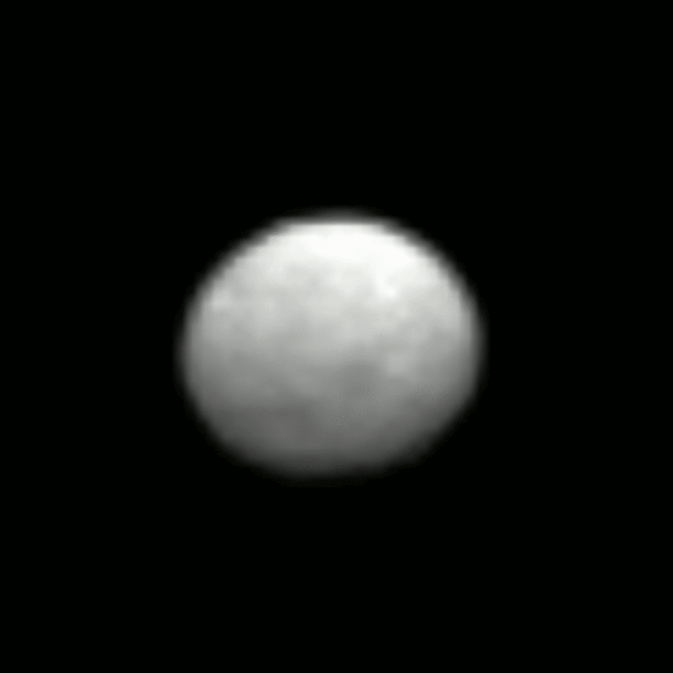Dawn's interplanetary probe sent new photos of the dwarf planet Ceres

Processed photo of Ceres
The study of the solar system is very active, and recently scientists have received new data from the Dawn interplanetary probe. The information obtained is a series of shots, in better resolution than the photos that scientists had until now. The probe was taken on January 13 of this year, from a distance of approximately 383 thousand kilometers. Observation of Ceres was carried out for about an hour, and scientists were able to create an animated "picture" of the planet (in continuation).
The resolution of the photograph of Ceres, obtained by astronomers now - 27 pixels. Earlier on the photo sent by the probe Ceres resolution was about 9 pixels. The image that can be seen in the preview photo was obtained after additional processing - photos taken in the normal and infrared ranges were combined.

Animated picture made from a series of pictures of Ceres
')
In the next few weeks, the probe should send significantly better photos of the dwarf planet. The probe will enter the orbit of Ceres on March 6 - at least, scientists hope so. The best-quality photographs of Ceres are still considered images taken with the Hubble telescope in 2003 and 2004. Those photos that scientists have received now are about 20% worse in quality than photos from Hubble. However, after a couple of weeks, astronomers will receive the most high-quality photos of Zerrera for all the time of observations - after all, Dawn is approaching the planet.

This is the original image of Ceres, obtained by scientists on January 13
Ceres is the largest object in the asteroid belt. The diameter of the planet is 950 kilometers. Perhaps there are huge deposits of water ice on Ceres. Some scientists believe that there may be a liquid ocean under the powerful ice crust.

This is an enlarged original image of Ceres.
If the Dawn probe can successfully take a position in the orbit of Ceres, this will be the first time that a terrestrial device has visited a dwarf planet, going into orbit. Now a team of experts is looking forward to receiving the highest quality photos of this space object. According to scientists, there may be many surprises.
At the moment data probe Dawn has already transferred 30 thousand images. Before Ceres, the probe investigated the second largest object from the asteroid belt - Vesta (diameter 525 22 kilometers), from 2011 to 2012.
Source: https://habr.com/ru/post/375645/
All Articles